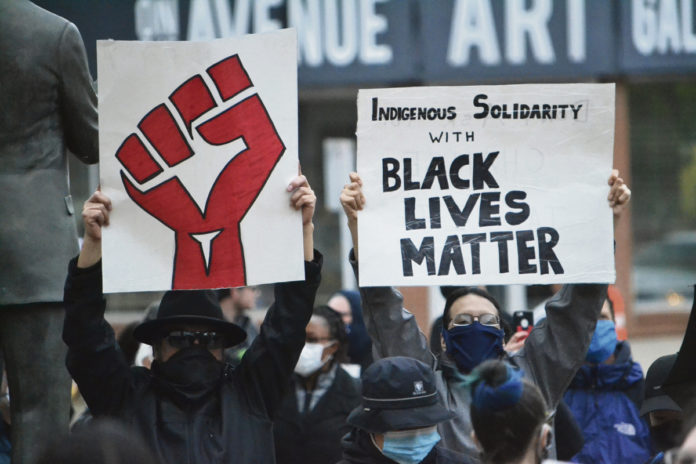
On May 25, 2020 a Black man named George Floyd died by asphyxiation, as a police officer knelt on the man’s neck for approximately nine minutes, despite Floyd repeatedly saying that he couldn’t breathe.
Multiple videos were released onto social media showing different angles of the incident and also showing several officers near the scene, who did not act on the police officer’s excessive use of force. The police officer has recently been charged with second degree murder, and the other three officers were also fired. The police initially claimed Floyd was resisting arrest, but the videos presented by witnesses have proven that was a false claim.
George Floyd was arrested because woman working checkout at a grocery store assumed that his money was counterfeit and called the police.
Shortly before the death of Floyd a Black man, Ahmaud Arbery, was killed while he was jogging in the middle of the day. And then another Black man, Christian Cooper, was bird watching when he asked a white woman to put a leash on her dog. She responded with calling the cops.
Many stories like this circulate the news, people talk about the incidents for a short period of time, and then go back to their lives. But the death of George Floyd has sparked protests all over America and now Canada.
There are a lot of Indigenous people protesting in solidarity with the Black Lives Matter movement, which has caused some people to ask, “What about Indigenous lives?”
The Black Lives Matter protests are inclusive to Indigenous people as well, though. The protests are mostly about racism in general and police brutality. There are photos of non-Indigenous people holding signs about MMIW and a lack of police inquiry.
A topic that people are talking about are the starlight tours in Saskatoon, where Saskatoon police would take Indigenous men that they had arrested, drive them to out of the city, in winter, at night. This is also referred to as Saskatoon freezing deaths as men have died from exposure.
What the Black Lives Matter movement and protests are doing, is bringing awareness to systemic racism in every facet for a person of colour. From justice to healthcare, and even education. The positive part about this for Indigenous people, is that that Black people are much more prominent in media than Indigenous people, and they are more likely to get their messages out to a broad and international audience. And, as mentioned, there are non-Indigenous people bringing up Indigenous racism during the protests and on social media, which is sparking a conversation that Indigenous people have been trying to start for a very long time.
The racism that Indigenous people face in Canada is rampant and vastly understated, which becomes apparent when any non-Canadian speaks of how nice and polite Canadians are. But Canada is a large Country, with a comparatively small population. And, as many people know, the history of genocide, violence, and racism against Indigenous people is appalling to say the least.
There once was a time when an Indigenous person needed permission to leave their reserve in the form of a pass. This lasted until sometime in the early 1900s. There were residential schools from the mid 1800s until 1996, the sixties scoop, doctors tying the tubes of Indigenous women after giving birth without their consent to keep them from having more children. There are many more instances, unfortunately, of different types of racism against Indigenous people in this Country.
One of the biggest topics that have come out of these protests, is defunding the police.
The Toronto police budget for 2020 is $358 million. This budget is just for the city of Toronto, not the province of Ontario.
When people say defund the police, what they mean is lower the annual budget for police units and giver larger budgets to education, housing, healthcare, and other agencies that help people.
There are few communities in Canada that are developing new programs aimed at helping at-risk youth to prevent crime and suicide, but they are usually operating on tight budgets. The argument is if programs like these had a little more wiggle room, police departments may not need such large budgets, nor would prisons.
Advocates pushing to defund the police say If the budgets of schools were no longer slashed, more children would have opportunities that they have been missing out on, especially schools in the north that often go overlooked. They argue that if the health system had a larger budget, maybe northern Saskatchewan could get a hemodialysis unit and other health care that they need.
The Black Lives Matter protests are about people of colour and the racism/injustice they have faced in North America for centuries and Indigenous people are being included in this conversation as well.

